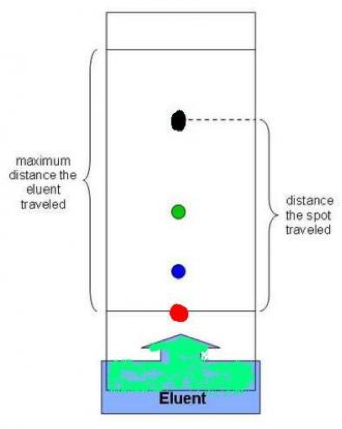All prosecutions for the unlawful possession of marijuana requires as an essential element of the crime for the government to advance proof that the unknown submitted for testing is in fact marijuana (contains THC). Can the government actually do that based upon its typical testing method?
In this series of posts we are going to examine this seemly simple question:
- What is the goal and the purpose of testing of unknowns generally? How do we best design a test for marijuana?
- How is most marijuana testing conducted in the United States?
- What is microscopic morphological examination? Is it a “good” test?
- What is the modified Duquenois-Levine test? Is it a “good” test?
- What is Thin Layer Chromatography? Is it a “good” test?
- Is the combination of all three tests create a “good” testing scheme?
- Is there a better way to test for marijuana?
Part 5: What is Thin Layer Chromatography? Is it a “good” test?
Thin Layer Chromatography testing
What is it?
Thin Layer Chromatography (TLC) is a chromatographic technique. It is a combination of a colorimetric test and is measured in terms of separation.
Mechanically how is it preformed?
TLC depends on the stationary phase, often a glass plate coated with silica (it must be properly desiccated or dried) and the mobile phase which is comprised of a solvent mixture made of toluene and diethylamine typically. When placed on a properly dried plate and using a properly mixed and prepared solvent, the solvent (the mobile phase) will be wicked up by the silica with capillary action and travel up the plate. A sample from the unknown is selected. It is mashed up in some mechanical process and in some processes call for it to be dissolved. It is placed in the designated spot. A test is compared by performing the reaction of the plate of a known sample from an adjudicated source. This comparison is made with the analyst’s eyes. There will be different spots on the plate at different positions from the origin with various intensities of color. The height and the color change are visualized. The spots typically need to be visualized with a chemical spray such as Fast Blue B Salt (50 mg in 20 ml of NaOH (0.1 N)) or particular lighting.
 How is the typical crime laboratory analyst trained to conduct this?
How is the typical crime laboratory analyst trained to conduct this?
Once again, the analyst is not trained in the fundamentals of how or why this process works. If you handed them a pen and paper and ask them to diagram and explain with specifics the chromatographic process, they would likely be baffled. Also foreign to them would be the specifics as to why the solvent used to elute up the plate has to be in a specific ratio and not another. In essence, it is another subjective test as it is based upon perception of color by the analyst and the perception of this height developing on the plate versus the adjudicated known.
The analysts are not academically trained in the theory of this technique of chromatography, and are not taught about cross-reactivity and false positives or other sources of errors.
Is this a verifiable test?
Much like the modified Duquenois-Levine test, TLC is potentially verifiable. Digital cameras exist. Photographs can be taken. Heck, even video can be taken to show how it is conducted on a particular sample from the unknown and this comparison to the adjudicated known. However, the modern practice is to not take a single photograph, to not take advantage of video technology and produce nothing verifiable in court that the test was even conducted or that the analyst’s perception of the change did happen and was correctly interpreted.
Again, there are no crime laboratories that I am aware of that use the ACE-V (Analysis, Comparison, Evaluation, and Verification) technique that one would find in fingerprint identification with a double check in real time by a fellow bench analyst. In essence, it is checked one time, by one person with no double check by another, and nothing produced that proves that the analysis was done or that the features that are reported as present were in fact objectively present.

Is there empirical validity studies that prove that this is a specific and confirmatory test?
Once again, this type of testing has not been proven to be a validated method to test specifically for THC. There are well-known and discovered false positives which includes coffee, basil and even tobacco products.
Once again, the same issues that are discussed prove true with this testing. This TLC test is preformed on a totally different sample from the unknown that is not subjected to the microscopic morphological examination or the modified Duquenois-Levine colorimetric test.


